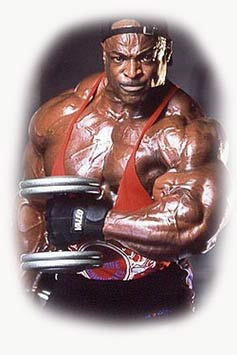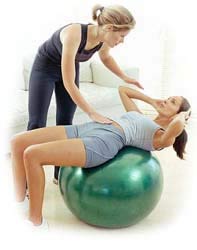- Like
- SHARE
- Digg
- Del
- Tumblr
- VKontakte
- Flattr
- Buffer
- Love This
- Save
- Odnoklassniki
- Meneame
- Blogger
- Amazon
- Yahoo Mail
- Gmail
- AOL
- Newsvine
- HackerNews
- Evernote
- MySpace
- Mail.ru
- Viadeo
- Line
- Comments
- Yummly
- SMS
- Viber
- Telegram
- JOIN
- Skype
- Facebook Messenger
- Kakao
- LiveJournal
- Yammer
- Edgar
- Fintel
- Mix
- Instapaper
- Copy Link
Top 5 Poor Resistance Training Choices
5. Poor Exercise Selection
Just Because Models in Magazines Do Them Doesn’t Mean You Should

Proper exercise selection goes a long way. The exercises you choose to perform while you workout should always be consistent with your goals.
This is why it makes absolutely no sense for people who are over weight and trying to lose weight or tone up to do isolation exercises.
You see this in every gym in America with women performing the inner and outer thigh isolation movements and even trainers training their weight loss clients with the same exercises bodybuilders use to build gigantic muscles.
Since there is such a variety of fitness goals which vary from person to person, the most important thing you should take away from the number 5 weight training mistakes is your exercise selection should always be consistent with your goals.
What You Can do to Improve Your Exercise Selection
To create fun and challenging workouts you should be creative but not at the expense of neglecting the very important compound exercises such as bench presses, squats, lunges and rows/pull-downs.
Always make sure to include your major compound movements at the beginnings of your workouts and go from there. Always remember that your fitness program on a whole is going to determine what happens to your body, not any single exercise.
4. Too Much Rest in Between Sets
You Don’t Love Being in the Gym THAT Much Do You?

Unless you are trying to be the next World’s Strongest Man, or a powerlifter your rest in between sets should be minimal.
If your goal is not strictly strength gain, you are most likely resting too long in between sets.
Resting for excessive time in between sets not only causes you to spend too long in the gym it may cause your body’s hormonal response to weight training to be off.
If you want your body to burn more calories and increase your metabolism, train like it.
What Can Help You to Rest Less in Between Sets During Your Workouts
Make sure you bring a bottle of water to the gym so you don’t spend 20 minutes per workout making trips to the fountain.
Exercise selection will largely determine how long you need to rest in between sets.
If you perform an intelligently designed workout of super-sets of opposing muscle groups or large-small muscle groups you should be able to perform your entire workout without resting.
3. Lifting Too Often
In Weight Training More is Not Always Better

Results in weight training is all about recovery. If you perform weight training exercises without letting your body recover completely from the previous session you may be doing more harm than good.
Many people believe in the “no pain, no gain” philosophy which leads to long training sessions in the gym.
They believe that if their muscles are not sore they didn’t workout long or hard enough.
Delayed onset muscle soreness has nothing to do with results unless your goal is to put on massive amounts of muscle and you’re eating 10,000 calories per day.
If you are lifting for general fitness, weight loss, or maintenance excess muscle soreness most likely means you are overtraining your muscles and it will hinder your results. You should spend your extra time performing cardio exercise to burn extra calories.
How to Determine the Right Number of Training Sessions per Week
Trial and error in a complete workout program is the only way to figure out how often you should be lifting weights. You may be able to get the same or even better results by spending 1/4 of the usual time lifting but if you never try you will never know.
2. Bad Form
A Fish out of Water is Not the Best Example of Proper Weight Training Form

For most people, exercise form is the most important aspect of weight training. For anyone who does not have structured education or years of experience proper form should be practiced at all times.
Bad form is the number 1 cause of weight training acute and chronic injuries. Weight training is a very safe exercise when performed properly and very dangerous if you use horrible form.
Bad form is not only dangerous, but it causes you to miss your target muscle groups and also may work incorrect muscle groups which can lead to muscle imbalances and possibly posture problems in the future.
If you have doubts of your exercise form, seek the advice of someone who knows more. Even if you think you are practicing proper form, find someone to watch your form because you may not be able to see the mistakes you are making.
How to Make Sure You Are Practicing Proper Form
When in doubt, slow down. Being under control lessens the chance of injury but if you feel something isn’t right, stop. If you don’t have or can’t afford a personal trainer, you can view videos with the proper exercise form and instructions right here!
1. Inadequate Intensity
Don’t Miss Out on the Most Basic Principle of Weight Training

Many people fail to learn what weight training intensity really is. It is defined as how close each set is to your 1RM or one repetition maximum.
Therefore by definition, the most intense workout is performing each exercise with the heaviest weight you possibly can for 1 repetition.
This is no way to actually train but what you can take from this valuable. With the exception of fresh beginners, most people do not exercise with adequate intensity, aka they don’t use heavy enough weights.
How to Ensure You Are Exercising With Proper Intensity
Your workouts do not have to be (and shouldn’t be) static with the same sets and reps. In order to ensure you are training with the proper intensity you should have at least one set of each exercise in which you fail!
Yes, failure is a necessary part of making progress with weight training.
Once you start incorporating intervals, the same recovery rules apply as for resistance training; you need a day of rest.
About Michael Behnken
Mike Behnken is a personal trainer who holds multiple NASM certifications and a MS in Exercise Science. Mike loves fitness, travel, and photography among many other interests.

